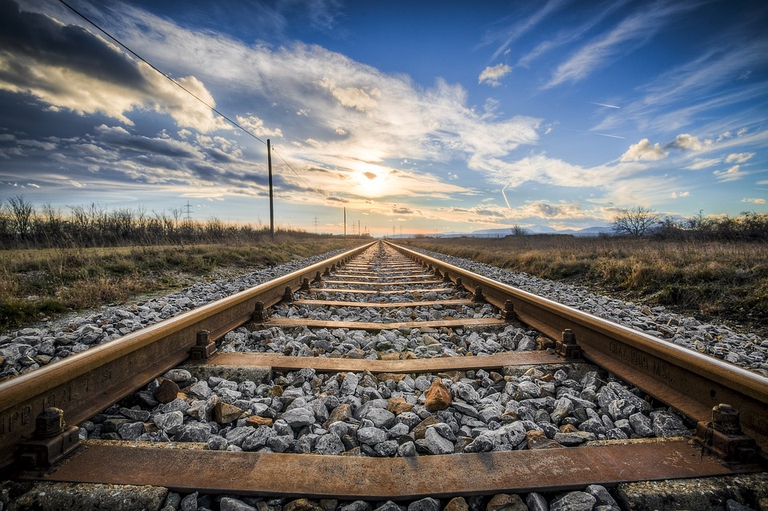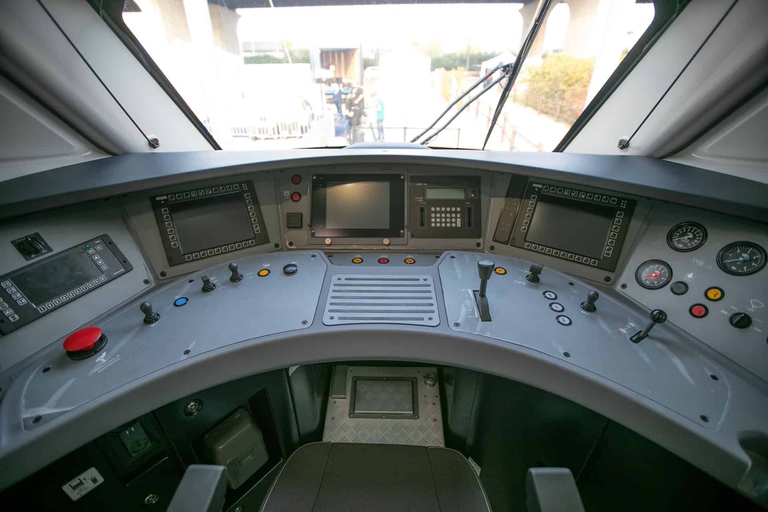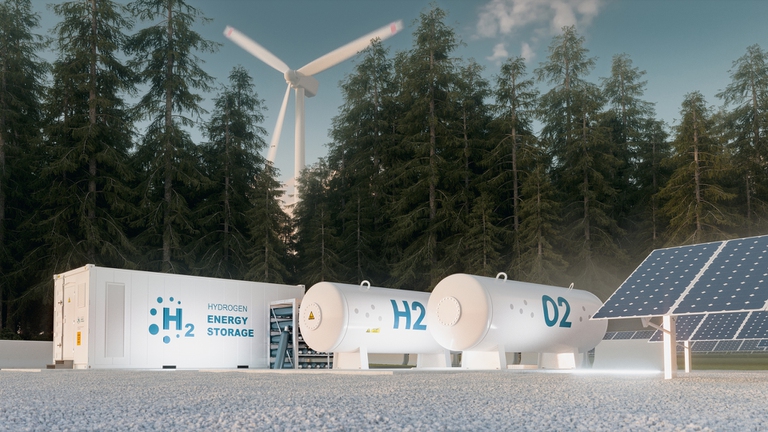https://www.lifegate.it/marco-biffoni-alstom-intervista-idrogeno
- |
It was October 2023 when FNM, the main integrated group in sustainable mobility in Lombardy, presented, together with the manufacturing company Alstom, the first train in Italy powered by hydrogen, announcing its entry into service in Valcamonica by 2025, along the non-electrified line Brescia-Iseo-Edolo managed by Trenord.
Each country has its own pace of transition and specific objectives.Italy is the second country in Europe, after Germany, which will adopt hydrogen trains, we hope that this will help to further accelerate the push.
Among those present at the event was also the Minister of Infrastructure and Transport Matteo Salvini, to underline the important stage within the H2iseO project, which aims to achieve the first Italian hydrogen valley in the Brescia area.But at what point is the green transition of rail mobility in Italy?He explains it to us Marco Biffoni, commercial & business development director Alstom Italy.
Biffoni, 2025 will be the year of entry into service of the first hydrogen train in Italy, we start from Valcamonica, from that Hydrogen Valley announced some time ago, can you tell us where we are with the transition of rail mobility in Italy?
In Europe, approximately 46 percent of railway lines are not electrified, while in Italy the percentage is 30 percent. Traffic on these lines is mainly managed using diesel trains.For routes where it is necessary to find an alternative to the use of diesel trains and where for various reasons it is not possible to electrify the network, solutions such as hydrogen or battery-powered trains are needed.Battery-powered trains are ideal for distances of up to 100 kilometers, while hydrogen-powered ones can cover up to 1,000 kilometers without refueling.In Italy, starting from the experience of the Coradia Stream regional train platform, we have developed the hydrogen version, the Coradia Stream H, which will be introduced on the non-electrified Brescia-Iseo-Edolo line in Valcamonica.The project involves the replacement of current diesel trains with new hydrogen-powered trains, which will begin commercial service by 2025.The reduction in environmental impact will be notable, as no direct CO2 emissions will be produced, in addition to the fact that the entire train was designed and developed to be 96 percent recycled.

Why Valcamonica?
A solution was needed to replace the old diesel trains currently in use on the Brescia-Iseo-Edolo line, a complex route with particular characteristics, including gradients and numerous tunnels.Alstom proposed the solution of hydrogen trains, which was then accepted, creating the first Italian railway Hydrogen Valley.
Something is also moving in Southern Italy…
Ferrovie del Sud Est, operator in the Puglia region, has also ordered Coradia Stream H hydrogen trains from Alstom which will replace some of the diesel trains currently in use.These will be the first hydrogen trains in the region.We are really happy to be able to contribute to this historic step for Puglia.

How does a hydrogen train differ from an electric one and what are the pros and cons of the two technologies?
Electric trains are not always the ideal solution, since part of the railway networks are not electrified and electrifiable.Aerial electrification requires significant investments, especially on long and low-density routes.The main advantage of hydrogen technology is that it is a solution with zero direct CO2 emissions and can cover distances of up to 1,000 kilometers.However, the costs of the two technologies vary based on several factors, such as the type of network, the route and the cost of energy.As far as passengers are concerned, hydrogen trains offer the same comfort and capacity already appreciated by passengers in their electric version.
Hydrogen in Italy is slow compared to other European countries, is the limit more technological, cultural or political?
The objective of implementing a full ecological transition poses great challenges to all operators but the desire to redesign rail mobility is strong.Each country has its own pace of transition and specific objectives.Italy is the second country in Europe, after Germany, which will adopt hydrogen trains, we hope that this will contribute to further accelerating the push necessary for institutions and players in the sector to continue to invest and accelerate towards more sustainable mobility.

Regarding hydrogen, in addition to the development of vehicle technology, for its diffusion it is necessary to invest in infrastructure, production sites, depots, refueling stations;do we have everything we need?
Alstom deals with the production of rolling stock through the contribution of various Italian factories:the Savigliano site for development, certification, production and testing, the Vado Ligure site for the preparation of the "power car" which is the heart of the technologically innovative part linked to hydrogen, the Sesto San Giovanni site for the components and the Bologna site for the development of the signaling system.Alstom, however, is not involved in the production, storage and refueling of hydrogen.
Today, diesel trains are still present on regional routes where electrification has not yet arrived (Sardinia and Valle d'Aosta are practically devoid of it), with obvious implications for sustainability. Can we take a snapshot of the rail transport situation in Italy?
Today more and more Italian regions are choosing alternative power solutions for public transport to replace the more polluting solutions.Like Alstom we have constant discussions with the Italian regions and we have open working tables with the relevant institutions.The Pnrr represents an unmissable development opportunity for Italy to modernize and is the opportunity to generate benefits for citizens, for society, for the industrial chain and for the environment.Today, important funds are allocated in the Pnrr for the green revolution and the ecological transition, identifying the railway sector as an area of interest also for the introduction of new technologies such as hydrogen.We therefore expect that the implementation of the strategy will bring benefits in terms of the supply chain, in new industrial and technological sectors and therefore important positive effects on the growth of the economy, with implications also from an employment point of view.

In July 2020 the European Commission launched the European Hydrogen Strategy, how do you judge the journey to date?
Today we are facing a profound transformation which, with the Paris agreements signed in 2015 and the European green deal, is trying to transform Europe into the first climate-neutral continent by 2050.Since the launch of the aforementioned European Hydrogen Strategy, hydrogen has taken on an increasingly central role in the energy transition of the European Union.We see significant progress in the adoption and development of hydrogen technologies, with multiple initiatives and investments taking shape.Aware of the importance of reducing the environmental impact of our activities, like Alstom we strive every day to make more sustainable choices starting from energy sources, from transport to waste management, with the aim of zero-emission rail mobility.
Alstom is present in 64 countries, this allows you to also make a comparison between the policies and allocations of funds that various governments implement to support this technology. How does Italy stand?
Globally, we see growing commitment and significant investment from many governments to support this technology.In Italy, the government has shown growing interest in hydrogen, particularly through the Pnrr, which provides significant funding for the ecological transition and the railway sector.

In addition to hydrogen, there are battery electric trains similar in operation to hybrid cars. Do you think this could be a technology worth investing in?
Alstom offers the market various green solutions that can adapt to different service needs.In addition to the hydrogen train, our product portfolio also offers the battery solution for non-electrified routes where less autonomy is required.Alstom's hydrogen technology for railways consists of two solutions:the first for non-electrified lines powered by hydrogen and battery, the second, suitable for both electrified and non-electrified lines powered by hydrogen, battery and pantograph.With these solutions, Alstom wants to offer the market the possibility of making all those areas currently served by polluting means of transport sustainable and interconnected, without the need to modify the existing infrastructure.
Let's close by talking about production processes, what is the railway industry doing to reduce its impact?
Our production processes have been at the center of company policies in terms of emission efficiency for years.Unlike other sectors, our industry is not heavy, but we have already implemented several actions to reduce our production footprint.In addition to the 96 percent recyclability rate of regional trains, all our sites use 100 percent renewable electricity, also thanks to solar panel systems;96 percent of waste is recovered and 98 percent of waste is recycled, including processes involving water use.
